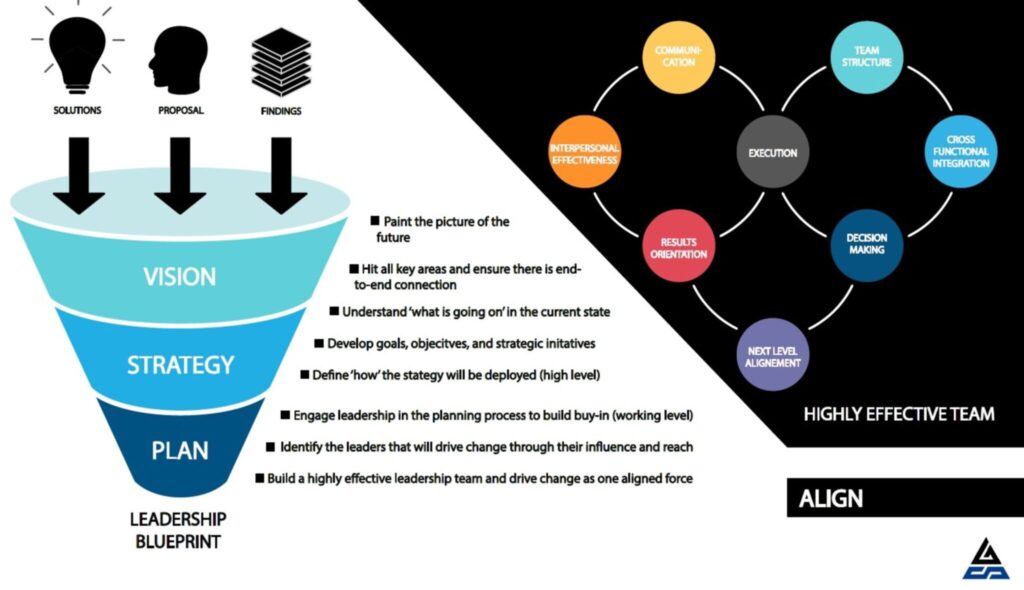
In the dynamic world of business, leadership and organizational alignment are the engines that drive sustainable success. Without clear alignment between leaders, teams, and goals, even the most well-resourced organizations risk inefficiency and missed opportunities. But what does alignment truly mean, and how can it be achieved in a way that transforms organizations?
Alignment begins with clarity of purpose. Leaders must craft a compelling vision that resonates with everyone in the organization. This vision isn’t just a statement—it’s a roadmap that defines where the company is heading and why it matters. As The Sortor Group emphasizes, a vision serves as a unifying force, helping employees understand their individual contributions to the organization’s broader objectives. It’s the spark that ignites collective ambition.
To transform vision into action, strategy plays a crucial role. A well-defined strategy aligns every operational aspect with the organization’s goals. This involves creating detailed plans, prioritizing initiatives, and breaking down objectives into actionable steps. The Sortor Group’s process of mapping strategy to real-world execution ensures that every decision and resource allocation supports the company’s mission, enabling consistent progress.
True alignment, however, extends beyond strategies and plans—it lives in the people who execute them. Leadership alignment is essential for fostering cohesion. When leaders collaborate and communicate effectively, they create a unified front that inspires confidence throughout the organization. The Sortor Group advocates for building leadership teams that don’t just lead but actively champion change and alignment across functions.
Resistance to change is one of the greatest obstacles to achieving alignment. Change, by its nature, creates uncertainty, and overcoming this requires a deliberate focus on behavior. Leaders must instill confidence by emphasizing transparency and quick wins. By addressing specific pain points and engaging stakeholders early, organizations can create buy-in, smoothing the path for long-term transformation.
Another cornerstone of alignment is cross-functional collaboration. Silos are the antithesis of alignment. They breed inefficiency, miscommunication, and duplication of effort. Breaking down silos requires open communication channels, shared tools, and a culture that values collective success over individual achievements. Regular cross-departmental check-ins and shared metrics ensure everyone is moving in the same direction.
Data-driven decision-making is the glue that holds alignment efforts together. When organizations create a single source of truth for information—whether through centralized data systems or streamlined reporting—they enable teams to make consistent and informed decisions. The Sortor Group’s emphasis on integrating tools like Power BI and structured data systems ensures leaders can identify opportunities, measure success, and adapt quickly when necessary.
Alignment is more than a process—it’s a mindset. When leadership teams demonstrate alignment through their actions, they create a ripple effect. Employees feel empowered, knowing their work aligns with a common purpose. The result is a culture where collaboration, accountability, and innovation thrive, creating a resilient organization capable of navigating any challenge.
In the end, leadership and organizational alignment aren’t achieved overnight—they are built through dedication, adaptability, and relentless pursuit of unity. By aligning purpose, strategy, and people, organizations can unlock their potential, turning vision into reality and challenges into opportunities. In a rapidly changing world, alignment is the blueprint for enduring success.

